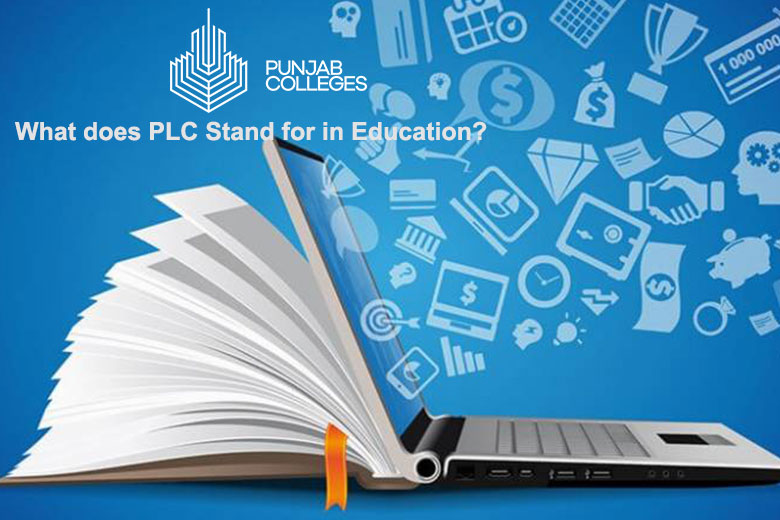
Educators throughout the country are trying to first reestablish relationships and bonds with students before assisting them in getting back on track with their academics. Maximizing training and working together in PLCs will be essential. PLCs may offer a framework for exchanging best practices and helping students in the weeks, months, and years to come.
Wait, what is a PLC?
PLC is an abbreviation for the professional learning community.
According to the conventional definition, a PLC is a continuous process in which educators collaborate in repeated cycles of collaborative discussion and active experimentation to improve outcomes for the students they teach. It is based on the premise that providing active learning to educators would improve student learning.
In other words, PLCs can serve as a setting for encouraging group development and knowledge exchange. Together, educators can make better decisions about students’ needs by interpreting and analyzing the data they have collected.
What Are the Principles of PLCs?
The following ten guidelines, which combine the best available research on education reform, may be found in all productive PLCs:
- Emphasis on student learning: School development begins with a consistent focus on student learning.
- Collective responsibility: Each adult must be accountable for the education of each student for them to succeed.
- Instructional leadership: Effective school administrators put a strong emphasis on teaching and learning.
- Collective efficacy: Teachers collaborate more effectively while choosing their courses.
- Adult learning: Teachers learn best on the job and in a group setting.
- Privilege time: Good schools provide teachers with time and places to talk about how students are learning.
- Continuous improvement: Effective teams develop via repeated cycles of identifying the educational requirements of students, and then planning, carrying out, and assessing the educational methods that meet those needs.
- Evidence-based: The most effective professional development is evidence-based and data-driven.
- System Outlook: The best school administrators help other schools succeed.
- Integrated regional support: Teams of professionals who are familiar with the communities they operate in assist schools in strengthening their systems.
4 Key Benefits of PLCs in Education
PLCs provide significant advantages for both teachers and students. Four ways PLCs improve education and learning are listed below:
1. PLCs Give Teachers the Chance to Directly Enhance Their Classroom Instruction
PLCs give teachers a simple approach to exchanging best practices and coming up with creative ideas to engage, learn, and improve student progress. The ability to exchange ideas and feel that their work in the classroom counts depends on effective communication between instructors.
These learning communities also help teachers think more critically about their teaching methods and students’ learning results. Meeting with your PLC allows you to communicate student success, and when information is shared across grade levels within the school, teachers and administrators take responsibility for every child’s education.
2. PLCs Strengthen the Bonds Between Team Members
Focusing on and being dedicated to student learning is the basic foundation of a PLC. The weekly meetings strengthen relationships and develop a team of leaders inside the institution or district that eventually spreads to other regions and the world.
It’s crucial to establish the duties and connections of team members if you want to create a powerful team. Building on others’ talents promotes interactions and encourages the growth of trust.
3. PLCs Assist Teachers in Keeping Informed of Cutting-Edge Research and Educational Technologies
Collaboration is necessary for educators to have continuing and regular chances to learn from one another, both within a district and outside of it. Teachers may share with and learn from one another every day in a global PLC.
Twitter and other social media platforms enable instructors to communicate with one another globally and build professional communities that go well beyond the boundaries of the traditional classroom.
You may build up channels of communication inside your district or school using several methods, allowing you to easily exchange ideas and best practices or dive into text conversations or video conferences to work together right away.
4. PLC Encourages Teachers to Think Critically
You can think about how to improve your teaching and modify your practice by learning from others in your PLC. The more brains from various backgrounds that come together, the more possible it is that you will improve and advance the subject of education.
When PLCs get together, they must concentrate their attention on issues connected to learning and provide materials that ultimately address issues that boost the success of students. PLC interactions must be centered on improving student outcomes.
PLC for Educational Success
PLCs appear to be an important component of educational institutions’ futures, or at the very least a useful instrument for growth and development. However, we want to be objective and realistic, therefore it’s critical to be aware of the dangers of integrating PLCs into your organizations. Making the appropriate choice requires understanding if your institution is prepared to make this shift and function as a professional learning community.

